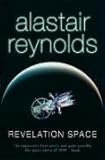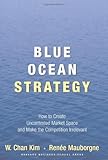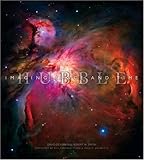|
|
Help |
| Home - Technology - Space (Books) | |
e99 Online Shopping Mall
|
|
Help |
| Home - Technology - Space (Books) | |
| Back | 21-40 of 99 | Next 20 |
click price to see details click image to enlarge click link to go to the store
| 21. What's Out There?: A Book about Space (Reading Railroad) by Lynn Wilson | |
 | Paperback: 32
Pages
(1993-03-24)
list price: US$3.99 -- used & new: US$0.80 (price subject to change: see help) Asin: 0448405172 Average Customer Review: Canada | United Kingdom | Germany | France | Japan |
|
Editorial Review Product Description Customer Reviews (7)
| |
| 22. Revelation Space by Alastair Reynolds | |
 | Paperback: 576
Pages
(2008-12-11)
list price: US$12.62 -- used & new: US$8.06 (price subject to change: see help) Asin: 0575083093 Average Customer Review: Canada | United Kingdom | Germany | France | Japan |
|
Editorial Review Product Description Sylveste is the only man ever to return alive and sane from a Shroud, anenclave in space protected by awesome gravity-warping defenses: "a folding a billion times less severe should have required more energy than was stored in the entire rest-mass of the galaxy." Now an intuition he doesn't understand makes him explore the dead world Resurgam, whose birdlike natives long ago tripped some booby trap that made their own sun erupt in a deadly flare. Meanwhile, the vast, decaying lightship Nostalgia for Infinity is coming for Sylveste, whose dead father (in AI simulation) could perhaps help the Captain, frozen near absolute zero yet still suffering monstrous transformation by nanotech plague. Most of Infinity's tiny crew have hidden agendas--Khouri the reluctant contract assassin believes she must kill Sylveste to save humanity--and there are two bodiless stowaways, one no longer human and one never human. Shocking truths emerge from bluff, betrayal, and ingenious lies. The trail leads to a neutron star where an orbiting alien construct has defenses to challenge the Infinity's planet-wrecking superweapons. At the heart of this artifact, the final revelations detonate--most satisfyingly. Dense with information and incident, this longish novel has no surplus fat and seems almost too short. A sparkling SF debut. --David Langford, Amazon.co.uk Customer Reviews (172)
| |
| 23. Space and Place: The Perspective of Experience by Yi-Fu Tuan, Editors,Karen E. Till, Steven Hoelscher, Yi-Fu Tuan | |
 | Paperback: 496
Pages
(2001-02-08)
list price: US$20.00 -- used & new: US$13.00 (price subject to change: see help) Asin: 0816638772 Average Customer Review: Canada | United Kingdom | Germany | France | Japan |
|
Editorial Review Product Description On the 25th anniversary of its publication, a new edition of this foundational work on human geography. In the twenty years since its original publication, Space and Place has not only established the discipline of human geography, but it has proven influential in such diverse fields as theatre, literature, anthropology, psychology, and theology. Eminent geographer Yi-Fu Tuan considers the ways in which people feel and think about space, how they form attachments to home, neighborhood, and nation, and how feelings about space and place are affected by the sense of time. He suggests that place is security and space is freedom: we are attached to the one and long for the other. Whether he is considering sacred versus "biased" space, mythical space and place, time in experiential space, or cultural attachments to space, Tuan's analysis is thoughtful and insightful throughout. Until retiring in 1998, Yi-Fu Tuan was a professor of geography at the University of Wisconsin-Madison. He is ranked among the country's most distinguished cultural geographers and has earned numerous honors, among them a Guggenheim Fellowship, the Bracken Award for landscape architecture, and an award for meritorious contribution to geography from the Association of American Geographers.He was recently named the Lauréat d'Honneur 2000 of the International Geographers Union.He is the author of many essays and books, including Escapism (1998) and Cosmos and Hearth (Minnesota, 1999). Customer Reviews (4)
| |
| 24. My Nest Isn't Empty, It Just Has More Closet Space: The Amazing Adventures of an Ordinary Woman by Lisa Scottoline | |
 | Hardcover: 256
Pages
(2010-10-26)
list price: US$22.99 -- used & new: US$11.99 (price subject to change: see help) Asin: 0312662297 Average Customer Review: Canada | United Kingdom | Germany | France | Japan |
|
Editorial Review Product Description Customer Reviews (1)
| |
| 25. Space: From Earth to the Edge of the Universe by Carole Stott | |
 | Hardcover: 360
Pages
(2010-10-04)
list price: US$40.00 -- used & new: US$21.24 (price subject to change: see help) Asin: 0756667380 Average Customer Review: Canada | United Kingdom | Germany | France | Japan |
|
Editorial Review Product Description Customer Reviews (1)
| |
| 26. That Hideous Strength (Space Trilogy, Book 3) by C.S. Lewis | |
 | Paperback: 384
Pages
(2003-05-06)
list price: US$16.00 -- used & new: US$5.00 (price subject to change: see help) Asin: 0743234928 Average Customer Review: Canada | United Kingdom | Germany | France | Japan |
|
Editorial Review Product Description The final book in C. S. Lewis's acclaimed Space Trilogy, which includes Out of the Silent Planet and Perelandra, That Hideous Strength concludes the adventures of the matchless Dr. Ransom. The dark forces that were repulsed in Out of the Silent Planet and Perelandra are massed for an assault on the planet Earth itself. Word is on the wind that the mighty wizard Merlin has come back to the land of the living after many centuries, holding the key to ultimate power for that force which can find him and bend him to its will. A sinister technocratic organization is gaining power throughout Europe with a plan to "recondition" society, and it is up to Ransom and his friends to squelch this threat by applying age-old wisdom to a new universe dominated by science. The two groups struggle to a climactic resolution that brings the Space Trilogy to a magnificent, crashing close. Customer Reviews (102)
| |
| 27. Space Mission Analysis and Design, 3rd edition (Space Technology Library) | |
 | Paperback: 969
Pages
(1999-10)
list price: US$63.95 -- used & new: US$48.56 (price subject to change: see help) Asin: 1881883108 Average Customer Review: Canada | United Kingdom | Germany | France | Japan |
|
Editorial Review Product Description Customer Reviews (17)
| |
| 28. Dead Space by Antony Johnston, Ben Templesmith | |
 | Hardcover: 168
Pages
(2008-12-03)
list price: US$24.99 -- used & new: US$16.48 (price subject to change: see help) Asin: 1607060337 Average Customer Review: Canada | United Kingdom | Germany | France | Japan |
|
Editorial Review Product Description Customer Reviews (10)
| |
| 29. The Production of Space by Henri Lefebvre | |
 | Paperback: 464
Pages
(1992-04-15)
list price: US$50.95 -- used & new: US$31.48 (price subject to change: see help) Asin: 0631181776 Average Customer Review: Canada | United Kingdom | Germany | France | Japan |
|
Editorial Review Product Description Customer Reviews (4)
"Social space" partly consists of a certain configuration of actual space in actual time.Space also encompasses and includes physical objects that participate in discourse (as Foucault would say). Thus, space is also a container of relationships. It is also the receptacle of history, "the outcome of past actions."Lefebvre uses the example of a mountain.It does not have to have been produced or even physically altered by human hands to be considered a social space. Lefebvre's mountain participates in many relationships. The mountain space participates in a dialectic with humans, other spaces (social, representational, and represented), and history (it is produced in history and plays a role in history). It is at once a locus, a node on a network, a path, and place of potentials (i.e. of possible material exchange). "Its `reality' [is] at once formal and material."In short, the mountain cannot be reduced to a simple object, writes Lefebvre. Space is powerful. Space, according to him, is anything but the "passive locus of social relations."It has an "active-operational or instrumental role," it is "knowledge and action."It instructs. It is also nothing less than a new mode of production.It contributes to "the establishment...of a system" and those in power (the bourgeois, most recently) frequently have made use of it.Space produces society, writes Lefebvre. He writes, "a decisive part is played by space in this continuity [of the reproduction of society]." At the same time space produces society, space is produced. What Lefebvre sets out to do is identify "the actual production of space," to bring the different kinds of space and the modes of their production into a theory. Space is not "produced in the sense that a kilogram of sugar or a yard of cloth is produced."Nor is it produced like an aspect of superstructure. Social space is produced by (and produces) power to serve its goals. Lefebvre laments that, in the work of philosophers, there has been an "abyss" between mental ("ideal") space and real space, between the internal "sphere", the realm of mental categories, and the external, physical, social. Lefebvre rejects the res cogitans/res existensa duality of Descartes, and separating mental space from real space strongly reinforces this. Lefebvre's belief that real minds in real bodies inhabit real space-at the same time spaces participate in the mental realm-is the most basic reason The Production of Spaceis useful for environmental historians. His ideas hint at new opportunities to bridge the culture/matter gap. Lefebvre also believes that physical environments have histories and humans are a part of them. "In short, every social space has a history, one invariably grounded in nature, in natural conditions that are at once primordial and unique in the sense that they are always and everywhere endowed with specific characteristics (site, climate, etc.)."He even sounds like an environmental historian at times. "The departure point for this history of space is not to be found in geographical descriptions of natural space, but rather in the study of natural rhythms, and of the modification of those rhythms and their inscription in space by means of human actions, especially work-related actions. It begins, then, with the spatio-temporal rhythms of nature as transformed by a social practice." Criticisms: Lefebvre frequently returns to a critique of the space produced by capitalism, a powerful (abstract) space that spans the globe and has left few pockets free from it. The space produced by something like capitalism is extremely powerful because one can not choose but be obedient to it; to live in it is "lived obedience."That is, to follow its dictates, move about in it in an orderly fashion, to be directed in some paths, prohibited from others, is to follow its instruction. This space is totally concerned with reproducing (bourgeois-serving) social relationships at the cost of "[creative] works, ...natural reproduction, over nature itself, and over natural time." His point is well taken, but I think these frequently tangential moments detract from his exposition of a new analytical tool. I get tired of hearing that the point of this analysis is to uncover the social relationships latent in spaces for the ostensible purpose of inspiring revolution.I'd rather he left such an analysis to a historian employing Lefebvre's idea rather than having Lefebvre try to make his exposition of a theoretical tool double as a manifesto. (I am also really weary of his defending himself against hardcore Marxists-his concentration is greatly lessened for the effort. I understand that he is fighting personal battles with his old friends at these moments.)
Overall, it's damned good stuff.I read this book and the idea for my Masters thesis came exploding out of me like one of those creatures from "Alien."
| |
| 30. Sacred Space: Enhancing the Energy of Your Home and Office by Denise Linn | |
 | Paperback: 336
Pages
(2005-04-07)
list price: US$15.90 -- used & new: US$10.05 (price subject to change: see help) Asin: 1844135691 Average Customer Review: Canada | United Kingdom | Germany | France | Japan |
|
Editorial Review Product Description Customer Reviews (29)
| |
| 31. Me and My Place in Space (Dragonfly Books) by Joan Sweeney | |
 | Paperback: 32
Pages
(1999-07-20)
list price: US$6.99 -- used & new: US$2.15 (price subject to change: see help) Asin: 0517885905 Average Customer Review: Canada | United Kingdom | Germany | France | Japan |
|
Editorial Review Product Description Customer Reviews (13)
| |
| 32. Creative Time and Space: Making Room for Making Art by Rice Freeman-Zachery | |
 | Paperback: 144
Pages
(2009-10-14)
list price: US$22.99 -- used & new: US$5.72 (price subject to change: see help) Asin: 1600613225 Average Customer Review: Canada | United Kingdom | Germany | France | Japan |
|
Editorial Review Product Description Customer Reviews (22)
| |
| 33. The Currents of Space by Isaac Asimov | |
 | Paperback: 240
Pages
(2010-09-28)
list price: US$14.99 -- used & new: US$7.79 (price subject to change: see help) Asin: 0765319179 Average Customer Review: Canada | United Kingdom | Germany | France | Japan |
|
Editorial Review Product Description Customer Reviews (33)
| |
| 34. The Empty Space: A Book About the Theatre: Deadly, Holy, Rough, Immediate by Peter Brook | |
 | Paperback: 141
Pages
(1995-12-01)
list price: US$12.99 -- used & new: US$6.33 (price subject to change: see help) Asin: 0684829576 Average Customer Review: Canada | United Kingdom | Germany | France | Japan |
|
Editorial Review Amazon.com Review Customer Reviews (13)
| |
| 35. Blue Ocean Strategy: How to Create Uncontested Market Space and Make Competition Irrelevant by W. Chan Kim, Renée Mauborgne | |
 | Hardcover: 256
Pages
(2005-02-03)
list price: US$29.95 -- used & new: US$16.00 (price subject to change: see help) Asin: 1591396190 Average Customer Review: Canada | United Kingdom | Germany | France | Japan |
|
Editorial Review Product Description Winning by Not Competing: A Fresh Approach to Strategy Since the dawn of the industrial age, companies have engaged in head-to-head competition in search of sustained, profitable growth. They have fought for competitive advantage, battled over market share, and struggled for differentiation. Yet these hallmarks of competitive strategy are not the way to create profitable growth in the future. In a book that challenges everything you thought you knew about the requirements for strategic success, W. Chan Kim and Renée Mauborgne argue that cutthroat competition results in nothing but a bloody red ocean of rivals fighting over a shrinking profit pool. Based on a study of 150 strategic moves spanning more than a hundred years and thirty industries, the authors argue that lasting success comes not from battling competitors, but from creating "blue oceans": untapped new market spaces ripe for growth. Such strategic moves-which the authors call "value innovation"- create powerful leaps in value that often render rivals obsolete for more than a decade. Blue Ocean Strategy presents a systematic approach to making the competition irrelevant and outlines principles and tools any company can use to create and capture blue oceans. A landmark work that upends traditional thinking about strategy, this book charts a bold new path to winning the future. W. Chan Kim is the Boston Consulting Group Bruce D. Henderson Chair Professor of Strategy and International Management at INSEAD. Renée Mauborgne is the INSEAD Distinguished Fellow and Professor of Strategy and Management. Customer Reviews (226)
| |
| 36. The Office Space Kit by Sarah O'Brien | |
 | Paperback: 32
Pages
(2006-10-10)
list price: US$14.95 -- used & new: US$3.99 (price subject to change: see help) Asin: 0762428112 Average Customer Review: Canada | United Kingdom | Germany | France | Japan |
|
Editorial Review Product Description Milton’s Red Stapler Customer Reviews (31)
| |
| 37. Space Planning Basics by Mark Karlen | |
 | Paperback: 240
Pages
(2009-05-04)
list price: US$60.00 -- used & new: US$41.99 (price subject to change: see help) Asin: 0470231785 Average Customer Review: Canada | United Kingdom | Germany | France | Japan |
|
Editorial Review Product Description Customer Reviews (8)
| |
| 38. The New Space Opera 2 by Gardner Dozois, Jonathan Strahan | |
 | Mass Market Paperback: 640
Pages
(2010-04-01)
list price: US$7.99 -- used & new: US$4.00 (price subject to change: see help) Asin: 006156236X Average Customer Review: Canada | United Kingdom | Germany | France | Japan |
|
Editorial Review Product Description Customer Reviews (15)
| |
| 39. Hubble: Imaging Space and Time by David Devorkin, Robert Smith | |
 | Hardcover: 224
Pages
(2008-09-30)
list price: US$50.00 -- used & new: US$15.89 (price subject to change: see help) Asin: 1426203225 Average Customer Review: Canada | United Kingdom | Germany | France | Japan |
|
Editorial Review Product Description Customer Reviews (19)
| |
| 40. God Space: Naturally Creating Room for Spiritual Conversations by Doug Pollock | |
 | Paperback: 128
Pages
(2009-07-21)
list price: US$14.99 -- used & new: US$9.17 (price subject to change: see help) Asin: 0764438719 Average Customer Review: Canada | United Kingdom | Germany | France | Japan |
Customer Reviews (14)
| |
| Back | 21-40 of 99 | Next 20 |